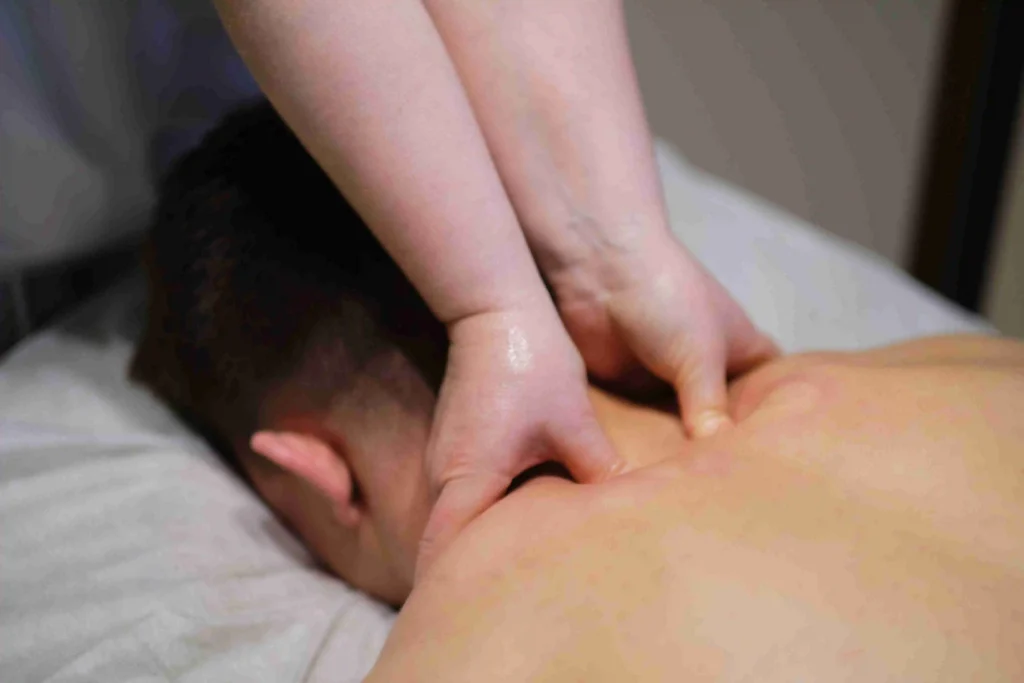MYOFASCIAL RELEASE MASSAGE

Massage with myofascial release: opening the road towards mobility and pain relief
Hi there, I’m Sujatha G, a Medical Massage Therapist having more than forty years of therapeutic and spa expertise. Myofascial Release Massage is one of the most successful techniques I have used to help many clients with limited movement and persistent pain over my career.
Myofascial Release (MFR) is explained in this article together with its many advantages, how to get ready for it, post-care advise, and who should or shouldn’t get this kind of massage? This book is meant to provide you the knowledge you need to make a wise and safe choice for your health and welfare. Your Money, Your Life: You must pick a treatment that will actually improve your life.
Massage with Myofascial Release:
Targeting the myofascial tissues in the body, myofascial release massage is a very successful hands-on method meant to alleviate pain and restore flexibility. Surrounding muscles and bones, the connective tissue known as the myofascia offers support and organization. Muscle pain, tension, stiffness, and limited movement can result from this tissue tightening or restricting brought on by injury, poor posture, stress, or chronic diseases.
The therapist gently, steadily presses in MFR to stretch and release the fascial tissue. This promotes the body’s inherent healing mechanism, releases tension, and helps restore flexibility. Myofascial Release provides deep pain relief and more mobility by concentrating on the fascia, typically neglected by conventional massage treatments.
Myofascial Release Massage: Benefits for Pain Relief Myofascial Release’s main advantage is lessening of pain. This technique helps to reduce pain in the fascia and muscles, so addressing the root cause of fibromyalgia, tension headaches, or chronic pain.
MFR helps to stretch and release tight fascia, therefore reducing stiffness and raising range of motion. For people with restricted movement or recuperating from injuries in particular, it’s quite successful.
Especially in the neck, shoulders, and back, MFR helps address postural abnormalities that cause pain and discomfort by releasing tension and increasing muscle balance.
Myofascial Release addresses the connective tissue surrounding muscles, therefore reducing their tension. Release of built-up tension will help you to feel less tight and uncomfortable and to enjoy relaxed muscles.
Increased Circulation: As MFR promotes flexibility and eliminates blockages in the fascia, blood flow improves, facilitating better circulation and nutrition delivery to tissues. Faster recovery and more general wellness follow from this.
Those with misalignment resulting from accident, poor posture, or disorders like scoliosis may find great benefit from this massage in re-aligning the muscles and connective tissues.
Fascia carries mental stress in addition to physical tension. Sometimes Myofascial Release helps individuals achieve emotional healing and lower tension or anxiety by releasing the fascia.
Before Care: How to Prepare for Myofascial Release Massage
Here are some basic guidelines to maximize your Myofascial Release Massage before your session:
- Before your treatment, sip on lots of water. During treatment, hydrated muscles and fascia respond more readily and discharge toxins more precisely.Wear Comfortable Clothing: During MFR, you may be asked to keep your clothes on, depending on the spa’s approach. Still, wear loose-fitting clothing that let your therapist readily access many areas of your body.
- Steer clear of heavy meals at least one to two hours before your appointment to avoid pain throughout the treatment. If you’re hungry, a simple snack will be plenty.
- Try to arrive to your appointment with a calm and peaceful head. MFR works better when you can remain calm and concentrate on your breath during the treatment.
Maximizing the advantages of myofascial release massage comes under after care.
Your body will naturally blend relief with soreness following your myofascial release massage; this is typical as your body adapts to the alterations in your fascia and muscles. Here’s how you treat your body following treatment:
- After your session, sip on lots of water. This helps eliminate any toxins the muscles and fascia have produced during the treatment.
- Rest and relax; let your body to incorporate the treatment. Steer clear of demanding exercises for at least 24 to 48 hours after your massage to avoid reversing the work done on your fascia.
- mild exercise: Engage in mild stretching or light exercise to assist maintain your muscles supple and prevent stiffness from returning.
- Apply heat or ice (if needed): A cold pack or heat pad will help the muscles relax should you feel sore following the practice. Choose depending on what your body feels most suited for.
- Avoid Heavy Exercise: For the next day or so, avoid heavy lifting, strenuous exercise, or other activity that could put strain on your muscles. Let your body recuperate and restore itself.
- Pay Attention to Your Posture: Throughout the day, notice your posture. The Myofascial Release treatment helps realign the muscles; thus, paying attention to your posture will help to preserve the advantages.
Who Should Massage Myofascial Release?
A lot of people benefit from myofascial release, but those with musculoskeletal discomfort or stiffness more so. The following are some people who would especially benefit from this therapy:
- Those with chronic pain disorders such fibromyalgia, lower back discomfort, or neck and shoulder stiffness will find great benefit from the long-term pain reduction Myofascial Release offers.
- Athletes and Active Individuals: This treatment can help release tight fascia and increase flexibility and range of motion, so assisting in recovery and performance whether you regularly exercise or are an athlete.
- Myofascial Release helps break down adhesions in the fascia and restore flexibility, hence it can be quite helpful for those healing from sports injuries or surgery.
- Those with postural problems—that is, those who suffer with misalignment or bad posture—may find Myofascial Release useful in correcting muscular balance and posture.
- MFR can help anyone with stress or tension release that pressure and encourage relaxation if you carry tension in your body, particularly in the neck, shoulders, or back.
Who Should NOT Get Massage Using Myofascial Release?
Although Myofascial Release is usually safe, some disorders may make this treatment inappropriate:
- If you have an acute injury (such a sprain or strain) or are swollen or inflamed, it might be advisable to wait until the inflammation goes down before getting Myofascial Release.
- Skin problems: People with open wounds on the treated regions or specific skin problems could have to refrain from this treatment till their conditions clear-cut
- People with very fragile bones or osteoporosis could have to see their doctor before receiving this therapy since deep pressure on the fascia could not be safe.
- First trimester pregnant women especially should see their healthcare provider before doing any kind of deep tissue work, including myofascial release.
How Should I Select the Best Spa for Massage for Myofascial Release?
Selecting a spa for your Myofascial Release Massage requires careful consideration of a few main criteria:
- Look for a spa with experienced and Certified Therapists with Myofascial Release specialized training. This guarantees they can use the technology safely and successfully and grasp its subtleties.
- Good spas will provide a customized consultation before the treatment to go over your objectives, background, and areas of pain or discomfort. This will guarantee that the therapy is catered to your need.
- The spa should offer a neat, peaceful, and comfortable setting so that you may unwind and get most benefits from the treatment.
- Testimonials and Reviews: To guarantee the spa has a good name for providing premium Myofascial Release massages, get comments from other clients.
- Correct Techniques: Make sure the spa applies mild, steady pressure during the massage and avoids too strong power since this may cause damage. The therapist should be adept in hearing the reactions of your body.
- In essence, your money and your life.
- For everyone experiencing tension, limited movement, or muscle pain, myofascial release massage is a quite successful treatment. Choosing this therapy means you are investing in your health and quality of life as well as your money is being used sensibly on a treatment likely to provide long-term relief.
- As usual, make sure to select a professional spa with certified therapists, a concentration on client care, and a safe, peaceful surroundings while looking for any massage treatment. Your Money, Your Life is too valuable to waste hence choose the best therapy for your well-being and enjoy the long-lasting effects of Myofascial Release.
Written by Sujatha G
Medical Massage Therapist at Spa Education
40 years experience as a Certified massage trainer
Medically reviewed by Varnisha
Ayur Vedic Treatment researcher 53 years experience

